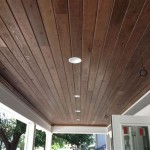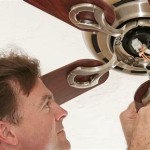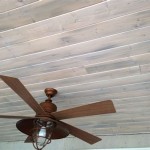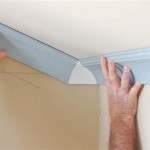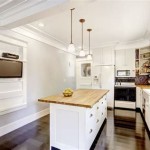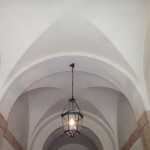```html
Understanding False Ceiling Work
False ceiling work, also known as a dropped ceiling, suspended ceiling, or T-bar ceiling, refers to a secondary ceiling installed below the main or structural ceiling of a room or building. This suspended grid and tile system is a common architectural feature in both residential and commercial spaces, offering a range of functional and aesthetic benefits. The primary structure, often concrete or wood, is left untouched, while the false ceiling creates a new, lowered plane that alters the appearance and performance of the room. Understanding the intricacies of false ceiling work involves considering its materials, installation processes, advantages, and potential drawbacks.
The implementation of false ceilings is a complex undertaking, requiring careful planning, precise measurements, and skilled execution. The selection of appropriate materials is crucial, as different materials offer varying levels of durability, fire resistance, acoustic performance, and aesthetic appeal. The installation process typically involves suspending a metal grid framework from the existing structural ceiling using wires or other support mechanisms. This grid then serves as a support for the chosen ceiling tiles or panels. The space between the original ceiling and the false ceiling can be used to conceal wiring, plumbing, and HVAC ductwork, contributing to a cleaner and more organized appearance.
The purpose of a false ceiling extends beyond mere aesthetics. It serves multiple practical functions, including improving thermal insulation, enhancing acoustic performance, concealing unsightly elements, and facilitating the installation of lighting and other fixtures. The choice of materials and the design of the false ceiling system can significantly impact its effectiveness in achieving these goals.
Key Benefits of False Ceiling Work
One of the most significant advantages of false ceilings is their ability to improve the thermal insulation of a room. The air gap created between the original ceiling and the false ceiling acts as an insulating barrier, reducing heat transfer between the room and the space above. This can lead to significant energy savings, particularly in buildings with poor insulation. In hot climates, a false ceiling can help to keep the room cooler by reducing the amount of heat that enters from the roof. Conversely, in cold climates, it can help to retain heat within the room, reducing the need for heating systems. The effectiveness of the insulation depends on the materials used for the false ceiling and the size of the air gap.
Acoustic performance is another key benefit. False ceilings can significantly reduce noise levels within a room by absorbing sound waves. This is particularly important in commercial spaces such as offices, restaurants, and theaters, where noise control is essential for creating a comfortable and productive environment. Acoustic tiles are specifically designed to absorb sound, and their use in a false ceiling system can significantly improve the acoustic properties of a room. The type of acoustic tile, its thickness, and its surface texture all contribute to its sound absorption capabilities.
The concealment of unsightly elements is also a major advantage. False ceilings can effectively hide wiring, plumbing, ductwork, and other building infrastructure, creating a cleaner and more aesthetically pleasing appearance. This is particularly useful in older buildings where these elements may be exposed or poorly organized. By concealing these elements, a false ceiling can create a more modern and streamlined look. The accessibility of these elements for maintenance and repairs is, however, an important consideration in the design of the false ceiling system.
Common Materials Used in False Ceiling Work
A variety of materials are used in the construction of false ceilings, each with its own unique properties and characteristics. The choice of material depends on factors such as budget, aesthetic preferences, functional requirements, and environmental considerations.
Gypsum boards are one of the most commonly used materials. These boards are made from gypsum plaster pressed between two sheets of paper. They are relatively inexpensive, easy to install, and can be painted or textured to achieve a variety of looks. Gypsum boards are also fire-resistant, making them a popular choice for commercial buildings. However, they are susceptible to water damage and may not be suitable for areas with high humidity.
Mineral fiber tiles are another popular option, particularly in commercial spaces. These tiles are made from a combination of mineral fibers, such as recycled paper, slag wool, and other materials. They offer good acoustic performance and are relatively fire-resistant. Mineral fiber tiles are available in a variety of sizes, patterns, and colors, allowing for a wide range of design options. They are also relatively easy to install and maintain.
PVC (polyvinyl chloride) panels are a durable and water-resistant option for false ceilings. These panels are made from a plastic material that is resistant to moisture, mold, and mildew. They are easy to clean and maintain, making them a good choice for areas with high humidity, such as bathrooms and kitchens. PVC panels are available in a variety of colors and patterns, and they can be used to create a variety of looks. However, they are not as fire-resistant as gypsum boards or mineral fiber tiles.
Metal tiles are a more expensive option, but they offer a number of advantages. Metal tiles are durable, fire-resistant, and resistant to moisture. They are also available in a variety of finishes, such as aluminum, steel, and copper. Metal tiles can be used to create a modern and industrial look. They are often used in commercial spaces such as offices, restaurants, and retail stores.
Wood panels can add warmth and character to a room. Wood panels are available in a variety of species and finishes, allowing for a wide range of design options. They can be used to create a rustic, traditional, or modern look. However, wood panels are more expensive than other options and require more maintenance. They are also susceptible to moisture damage and may not be suitable for areas with high humidity.
Installation Process and Considerations
The installation of a false ceiling typically involves several key steps. First, the area is measured and marked to determine the layout of the grid system. Then, the suspension system is installed, which usually involves attaching wires or hangers to the existing structural ceiling. The grid system is then assembled and leveled, ensuring that it is perfectly horizontal. Finally, the ceiling tiles or panels are installed, fitting snugly into the grid framework.
Proper planning is essential for a successful installation. This includes carefully considering the location of lighting fixtures, HVAC vents, and other services that will be integrated into the false ceiling system. It is also important to ensure that the false ceiling is installed at the appropriate height, taking into account the headroom requirements of the room.
Accessibility for maintenance and repairs is another important consideration. The false ceiling should be designed in such a way that it is easy to access wiring, plumbing, and other services located above the ceiling. This may involve using removable tiles or panels, or incorporating access hatches into the design.
Fire safety is a critical concern. The materials used for the false ceiling should be fire-resistant, and the installation should comply with all applicable building codes and regulations. Fire-rated tiles and panels are available, and these should be used in areas where fire safety is a particular concern.
Finally, it is important to ensure that the installation is carried out by qualified professionals. A poorly installed false ceiling can be unsightly, unsafe, and can lead to problems with thermal insulation, acoustic performance, and accessibility.
In summary, false ceiling work is a multifaceted undertaking that requires careful consideration of materials, installation processes, and functional requirements. The benefits of a well-designed and properly installed false ceiling are numerous, including improved thermal insulation, enhanced acoustic performance, concealment of unsightly elements, and increased aesthetic appeal. By carefully weighing the various factors involved, it is possible to create a false ceiling system that meets the specific needs of a given space.
```
False Ceiling ப ட ற ங கள இத ர க

False Ceiling Design With In Tamil Illam Contact 9092445561

False Ceiling ப ட ற ங கள இத ர க

Gypsum False Ceiling At Best In Chennai By True Value Interiors Id 10393865212

ந ங க False Ceiling பண ண ப ற கள கண ட இத ர Tamil Falseceiling

False Ceiling ப ட ற ங கள இத ர க

Pvc Ceiling Design New Ideas In 2024
What Will Be The Total Cost Of False Ceiling 80 Sq Ft Area Quora

வ ட க False Ceiling ப ற ங கள கண இத ர Budget ல Civilxpress

False Ceiling Designs Revamp Your Rooms With These Innovative
Related Posts

